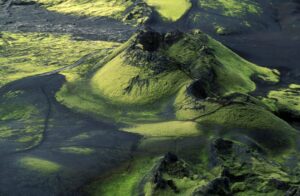Earthquakes are frequent in this part of South America where the Nazca Tectonic Plate is always moving beneath the South American Plate.
In the afternoon of June 23, 2001, a magnitude 8.4 earthquake struck the offshore area of Peru immediately west of the city of Arequipa. Its epicenter was a little over one hundred miles offshore and because of its magnitude it was the largest earthquake worldwide for over thirty-five years. It occurred at the boundary between the Nazca and South American tectonic plates in an area that has a history of very large earthquakes. At least seventy-five people were killed by the 2001 earthquake, including twenty-six killed by a tsunami, around 2,700 were injured, over 17,510 homes were destroyed, and a further 36,000 homes were damaged.
It was in this same area offshore of Peru that, on February 19, 1600, South America’s biggest volcanic eruption in all of recorded human history occurred. It happened in a mountain close to Arequipa. Its Volcanic Explosivity Index (VEI) was 6, the same as Krakatau’s, and the type of eruption was also the same as Krakatau’s. In 1784, Arequipa was hit with an earthquake that killed fifty people and destroyed almost all the buildings. Two others, in 1868 and 2001, did extensive damage. Despite the hazards, the city has grown rapidly through the years because it is located in a good agricultural area and it is strategically located for transportation. Its population has grown from about 20,000 at the end of the eighteenth century to 600,000 today, making it Peru’s second biggest city.
Tsunami run up heights from the 2001 earthquake near the coastal city of Camana are estimated from field evidence to have reached twenty-two feet and at other neighboring locations the tsunami penetrated inland for almost a mile. Camana, because of its location directly in line with the tsunami, was hit hardest. Hundreds of homes, hotels, and restaurants were destroyed. Elsewhere on the Peruvian coast damage was limited to the area between Atico and Matarani. High tide gauges were registered all along the Chilean coast as far south as Coquimbo. Fortunately, as far as most coastal locations were concerned, the earthquake occurred in the southern hemisphere’s winter when resort areas were deserted and thus the death toll was small. It would have been a very different story had the quake struck in January.
Officials and media reports said that fatalities and damage occurred, for the most part, in the towns of Arequipa, Moquegua and Tacna. Arequipa Mayor Manuel Guillin said that 70 percent of the homes in his town were damaged, including a number of colonial buildings and homes in the historic district. He added that the tower of an ancient church in the center of Arequipa crumbled during the quake and thousands of people fled their homes in panic when they felt the quake. The cathedral was first constructed in 1656, but rebuilt after an earthquake in 1868. In the desert region around the coastal city of Ilo, the earthquake produced intense and widespread ground-failure effects. These included landslides, pervasive ground cracking, micro fracturing, collapse of drainage banks, and widening of hillside rills, giving rise to a new term for earthquake damage, “shattered landscapes.” Because of the region’s familiarity with major earthquakes, relief for survivors came quickly in the form of blankets, food, shelter, medicine, and clean water.





















